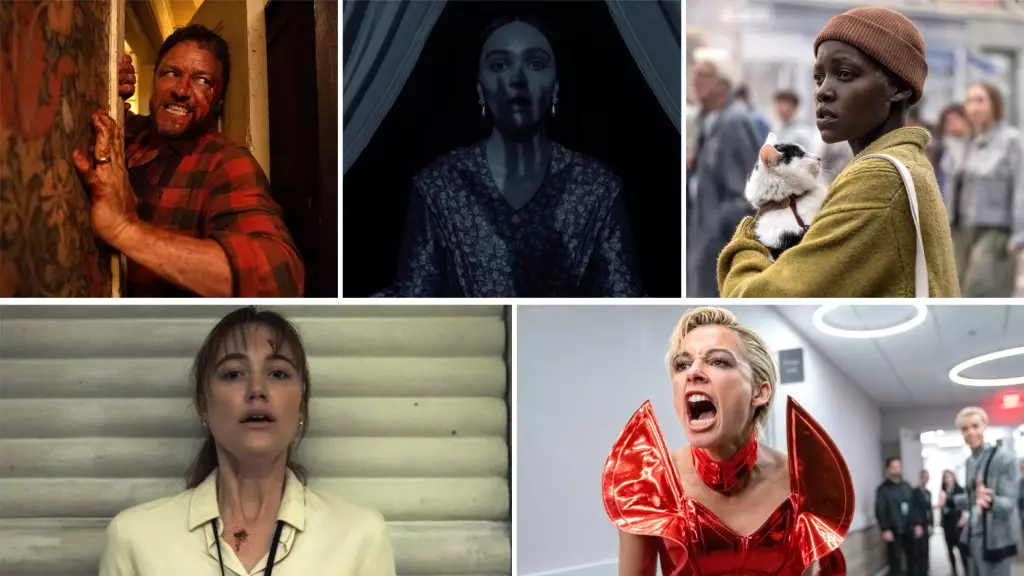As film studios navigate the choppy waters of box office earnings in the 2024 landscape, it is clear that audiences’ preferences and the dynamics of distribution have shifted dramatically. The recent findings from Deadline’s Most Valuable Blockbuster tournament emphasize that a movie’s story does not end with its theatrical release. A film’s profitability encompasses various other revenue streams, such as streaming rights and merchandising opportunities. This multifaceted approach, especially in the horror genre, is where studios are now finding unexpected triumphs.
The seismic shift in how films are evaluated, particularly by traditional studios contrasting with the strategic plays by streaming giants like Amazon and Apple, reveals a complex interplay between theatrical releases and their successors on digital platforms. Consequently, this year’s analysis, while excluding data from these new major players, highlights a renewed focus on what defines a box office hit. It’s a compelling narrative of resilience and innovation, especially observed within the lower and mid-budget horror films that have outsized financial gains compared to their modest production costs.
The Horror Phenomenon: A Quiet Place: Day One
One of the standout successes of 2024 is Paramount’s “A Quiet Place: Day One.” This prequel to the franchise, conceived by John Krasinski, defied typical expectations for a third installment in a horror series. The film’s debut, raking in $52.2 million at the box office, signals that the brand’s strength can transcend cast changes and directorial shifts. The franchise’s established narrative world, combined with a fresh directorial vision from Michael Sarnoski, revitalized interest and delivered a compelling narrative exploration of an apocalypse set against the vibrant yet haunting backdrop of New York.
Moreover, the film exemplifies a strategic move by Paramount to expand its cinematic universe by capitalizing on audiences’ familiarity and affection for the franchise while diversifying its storytelling approach. The combination of a well-executed marketing strategy and crisp production values ensures that “A Quiet Place: Day One” stands as a testament to how horror films, often shunned during the box office race, can actually take center stage when properly harnessed.
Dangerously Successful: Nosferatu
In a surprising twist, Focus Features’ “Nosferatu” emerged as another prominent player, netting an impressive $70 million. This film represents a revival of period horror that deftly balances artfulness and genre expectations. Directed by Robert Eggers, it successfully built upon the cinematic legacy of Dracula without alienating its audience. The buzz created from a sneak peek campaign and the clever tagline, “He is coming!” not only drew in curious viewers but also positioned the film as a serious contender during the typically subdued holiday season.
The high-gloss marketing and strategic release bolstered Momentum, highlighting that audiences are hungry for innovation—even in genres often perceived as niche. Rather than stagnating with conventional horror tropes, “Nosferatu” showcases a new critical appetite for thoughtful horror narratives, suggesting a potential paradigm shift within the industry.
The Sequel Dilemma: Smile 2
In the realm of sequels, “Smile 2” demonstrated the efficacy of maintaining the original creative team, with Parker Finn returning as writer and director. Paramount’s decision to move forward with a second installment capitalized on the success of the first film, which wasn’t just a financial hit but also a cultural phenomenon. With a net profit of $55.4 million, the film used a blend of traditional marketing with innovative, in-world campaigns that even included a music release tied to the storyline.
This approach illustrates a savvy understanding of modern audiences and their consumption habits. The crossover between music and film, coupled with real-time marketing strategies, points toward a form of engagement that exceeds mere ticket sales. The strategy to relive the original’s unique promotion while integrating pop culture elements successfully recaptured audience attention, underscoring the continuing relevance and profitability of horror sequels.
The Blumhouse Model: Speak No Evil and Beyond
The resilience of Blumhouse Productions is epitomized in “Speak No Evil,” which netted $50 million with a minimalist budget of merely $15 million. Blumhouse’s unique model of keeping production costs low while focusing on compelling storylines and streamlined marketing continues to pay dividends, even for films that initially debut with modest starts. The strategic maneuvering to create suspense through psychological horror rather than reliance on gore illustrates the versatility and appeal of the Blumhouse approach.
This film benefited from counterprogramming against established popular releases, adeptly capturing market share from horror enthusiasts who were seeking something fresh and original. The movie’s transformative journey from a lukewarm opening to a thriving box office success reaffirms Blumhouse’s knack for identifying and nurturing unique narratives that resonate with viewers.
Neon’s Innovative Gamble: Longlegs
Lastly, Neon’s “Longlegs” surprised critics and audiences alike with a gripping portrayal of a dark serial killer narrative. The success of the campaign, which cleverly kept lead Nicolas Cage’s role under wraps, illustrates a calculated risk that paid off, resulting in the film’s largest opening for the company at $22.4 million. Neon managed to elevate genre filmmaking by appealing directly to aficionados of horror while also keeping marketing costs low.
Strategic distribution and innovative storytelling have positioned “Longlegs” as a model for financial success amid saturated market conditions. In essence, this film showcases that when distributors prioritize originality while minimizing expenditure, they can generate substantial returns on investment, thereby redefining the playbook for horror filmmaking.
The 2024 cinematic landscape tells a compelling tale of how innovative strategies, combined with audience engagement and creative risk-taking, can redefine box office success.


Leave a Reply